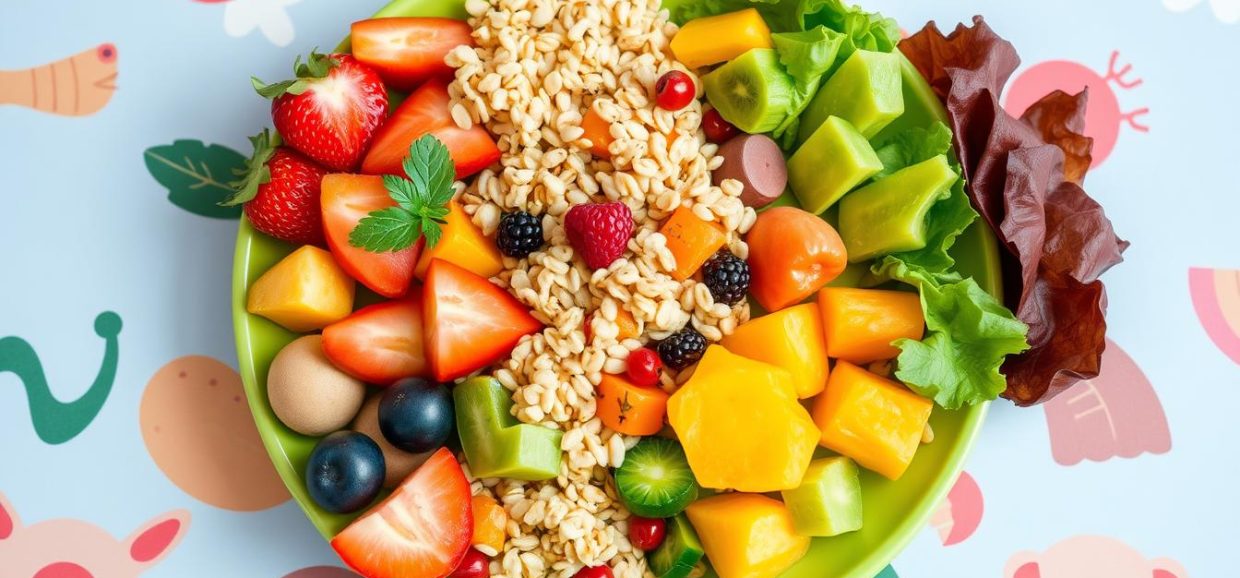We all want our kids to eat well and grow strong. But, many kid-friendly foods are filled with harmful stuff. This article will show you the bad stuff in kids’ meals and suggest better options.
Key Takeaways
- Many children’s meals contain harmful additives and preservatives that can negatively impact health
- Processed foods often have high levels of sodium, sugar, and artificial flavors that should be limited
- Choosing fresh, whole-food ingredients can provide more nutrients and support better development
- Making meal prep fun and involving kids in the process can encourage healthier eating habits
- Navigating food allergies and sensitivities is important for ensuring kids’ safety and nutrition
The Hidden Dangers of Processed Foods:
Many processed foods for kids are filled with preservatives, artificial colors, and flavors. These ingredients may make the food last longer and look better. But, they can harm the health of growing children.
Preservatives and Artificial Additives:
Preservatives like BHA, BHT, and sodium nitrite are in many kids’ meals. Studies link these to behavioral problems, hormonal issues, and cancer risk. Artificial colors and flavors can also cause hyperactivity and harm the brain in kids.
High Sodium and Sugar Content:
Processed foods for kids often have too much sodium and sugar. Eating too much of these can lead to obesity, high blood pressure, and diabetes. It can also shape unhealthy eating habits for life.
The dangers of processed foods are a big worry for parents. Knowing the risks helps families choose healthier, whole foods for their kids.
“The food you eat can be either the safest and most powerful form of medicine or the slowest form of poison.”
The Importance of Fresh, Whole Foods:
As parents, we all want the best for our kids. One key step is to focus on fresh, whole foods. These foods, like fruits, vegetables, whole grains, and lean proteins, are packed with vitamins and minerals. They also have fiber, which is often missing in processed foods.
Whole foods don’t have the bad stuff found in processed foods. They don’t have additives, preservatives, or too much sodium and sugar. By using more whole, fresh ingredients, we can make sure our kids get the nutrients they need.
“A diet rich in whole foods not only supports a child’s physical development but also lays the foundation for healthy eating habits that can last a lifetime.”
Building Lifelong Healthy Eating Habits:
Starting healthy eating habits in childhood is key for a lifetime of wellness. Parents should choose nutrient-rich, whole foods over processed, sugary, and salty ones. This helps kids develop a balanced diet as they grow.
Food education is vital. Teaching kids about fruits, veggies, whole grains, and lean proteins is important. Parents can help by letting kids help with meal planning and shopping. This makes them understand healthy eating better.
It’s also important for parents to set a good example. Eating wholesome foods at home encourages kids to do the same. This helps their childhood nutrition and sets them up for long-term health.
Healthy eating habits in childhood lead to better habits in adulthood. This supports their well-being and helps prevent diseases like obesity and diabetes.
“The habits we form from childhood make no small difference, but rather they make all the difference.”
Conclusion
By knowing the bad stuff in many kids’ meals, parents can help their kids stay healthy. Switching to fresh, whole foods is a big step. It helps kids eat well for a long time.
It’s important to avoid processed foods, preservatives, and too much salt and sugar. Use fresh, whole foods instead. This way, your kids get the nutrients they need to grow strong and smart.
Parents who choose healthy foods for their kids are doing great. They’re helping their kids stay healthy now and in the future. This teaches kids good eating habits for life.




1,806 Comments